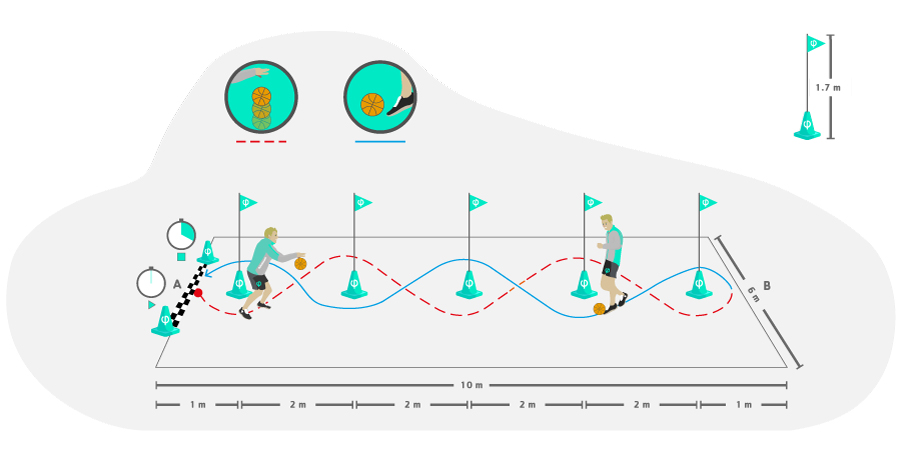
Zig-zag test with a ball
The main goal of this test is to measure general dynamic coordination, i.e. that which reflects the correct communication between the central nervous system (CNS) and the skeletal musculature in movement. This involves a large number of muscle segments to develop a joint action using all parts of the body.
- Required Material: A well bouncing ball, a flat, non-slip surface, 5 cones with spikes or flags at the top (1.7 m high), a tape measure and a stopwatch. Adhesive tape or similar to mark the start/finish line of the circuit will also be needed.
- Procedure: The 5 cones must be placed in a straight line, 2 metres apart, leaving a distance of 1 metre from the start (A) to the first cone and from the last cone to the finish line (B). The subject must perform a zig-zag back and forth circuit (A-B-A) between cones, bouncing the ball on the outward journey (A-B), then leaving the ball on the ground and carrying it with his/her foot on the return journey (B-A). The participant starts the test with his foot behind the starting line (A), in a sprint start position with the ball held in both hands and on the signal of the evaluator he/she will try to complete the course in the shortest possible time.As seen in the illustration, the subject must start the test with the first cone on his/her left hand side. The test is finished when the subject returns to cone A and crosses the finish line with any part of his/her body. At this moment, the stopwatch will be stopped and the elapsed time will be recorded. Any attempt in which a competitor knocks over a cone on the course will be considered void and will not be counted.
- Assessment: It is measured in seconds (sec) and the subject has a maximum of 3 attempts. (En Fisicalcoach,) The lowest time, as well as the mean and the median can be recorded.
- Remarks: This agility circuit is often used as an entrance exam for the degree in Physical Education and Sport Sciences.
Take this test and 139 more in our App